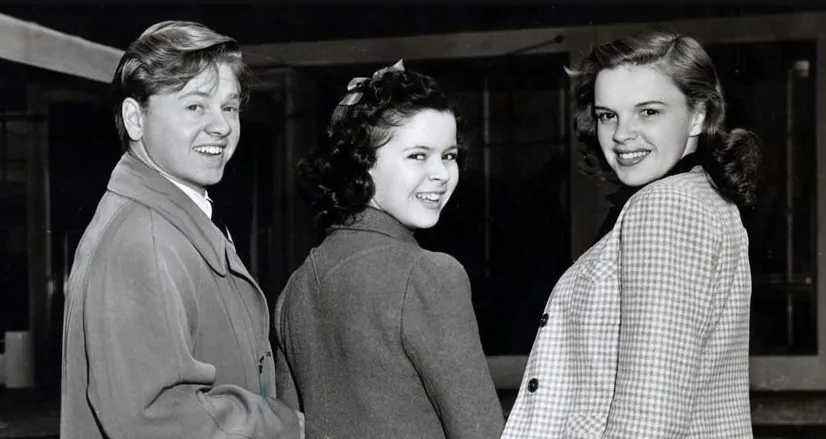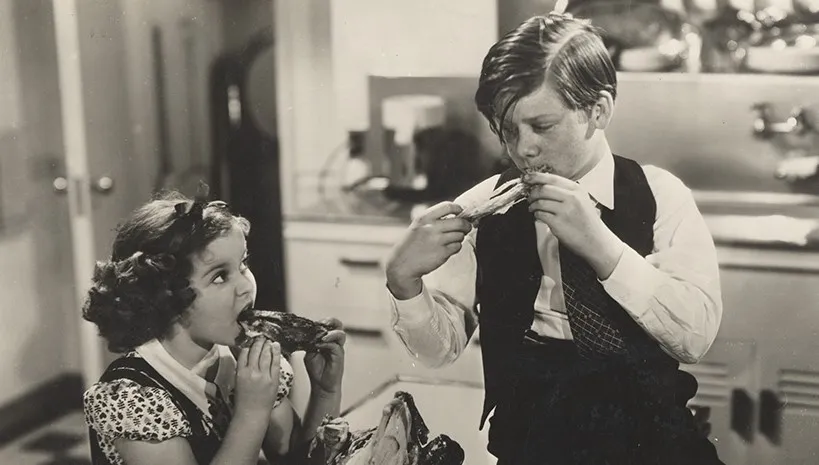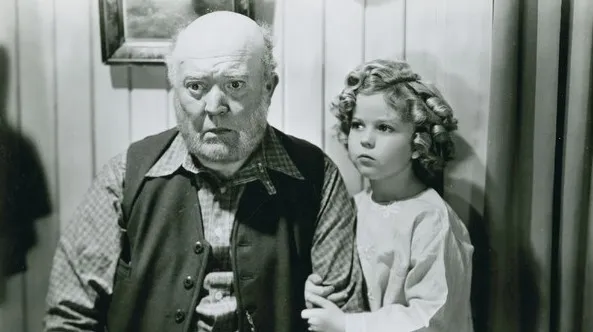In 1933, Shirley Temple was a little-known child actress whose career was just beginning to take shape. Born on April 23, 1928, in Santa Monica, California, Temple's incredible journey to stardom would start in earnest during this pivotal year.

While many people associate Shirley Temple with her iconic performances in the mid to late 1930s, her early years, particularly in 1933, laid the foundation for the stardom that would soon follow.
This article explores Shirley Temple's early career, focusing on her life in 1933 and how this year marked the beginning of her rise to fame. Through a mix of talent, charm, and opportunity, Temple would capture the hearts of audiences, setting the stage for a career that would define a generation.
The Early Life of Shirley Temple

Temple's mother, Gertrude Temple, recognized her daughter’s potential as a performer from an early age.
She enrolled Shirley in dance classes when she was just three years old, hoping to develop her natural talent.
Her curly hair, dimples, and precociousness quickly made her stand out among her peers.
By 1932, Temple was discovered by Charles Lamont, a casting director at Educational Pictures, a small studio that specialized in making short films. Her journey from a typical little girl to a child star was set in motion.
Shirley Temple’s First Film Roles in 1933

In 1933, Shirley Temple landed her first film roles, marking the beginning of what would become an illustrious career. Her early work was primarily in short films, which showcased her acting and dancing abilities.
One of her first significant roles was in the series Baby Burlesks—a collection of short films that parodied popular movies and cultural trends of the time. The unique twist in these films was that all of the actors were toddlers and young children.
In Baby Burlesks, Temple played various characters that allowed her to display her natural charm and comedic timing.
Although the Baby Burlesks films were controversial by today's standards due to their use of children in adult situations, they were well-received at the time and gave Temple the exposure she needed to catch the attention of bigger studios.
Temple's standout performance in War Babies (1932) solidified her place in the Baby Burlesks series, and she would go on to star in more of these shorts throughout 1933.
Despite the modest production values, her undeniable talent was evident, and it wasn’t long before Hollywood took notice.
Baby Burlesks: A Controversial Start

Baby Burlesks might have been the stepping stone to Shirley Temple's career, but the series has since been criticized for its treatment of child actors.
The films were known for putting young children in adult roles, often with mature themes that were far beyond their understanding.
For example, in War Babies, Temple played a barmaid in a parody of World War I dramas.
The studio's treatment of the child actors was also questionable.
If Temple or her fellow child actors misbehaved, they were placed in a "punishment box" as a form of discipline. This small, dark box was used to make the children comply with the directors' demands.
Despite these conditions, Temple’s mother, Gertrude, remained supportive of her daughter’s budding career, believing that Shirley was destined for stardom.
Though Baby Burlesks was not without controversy, it served its purpose by introducing Shirley Temple to a wider audience. Her performances, even at such a young age, demonstrated a remarkable level of professionalism and a natural gift for entertainment.
Breaking into Feature Films

As 1933 progressed, Shirley Temple began to break away from short films and move into feature films. Her first major role in a feature-length film came with Stand Up and Cheer! (1934), though the production began in late 1933.
In this film, Temple played the role of a young girl named Myrt, and her dance performance in the number "Baby, Take a Bow" stole the show. This role would be the beginning of her ascent to full-fledged stardom.
Though Stand Up and Cheer! was released in 1934, it was during the latter part of 1933 that Temple's star began to rise.
The film industry was quick to recognize her potential, and she was soon signed to a contract with Fox Film Corporation, which would later become 20th Century Fox.
At the age of just five years old, Shirley Temple was on the cusp of becoming a household name. The year 1933 marked a transition from being a relatively unknown child actor to someone who could carry a film.
Her infectious personality, combined with her talent for singing and dancing, made her an ideal star for the times.
The Great Depression and Shirley Temple's Impact

The timing of Shirley Temple's rise to fame was significant. The United States was deep in the throes of the Great Depression, a period of economic hardship that affected millions of Americans.
In this context, Temple's films provided a much-needed escape for audiences. Her cheerful disposition and optimistic characters offered hope during a time when many people were struggling to make ends meet.
Temple's on-screen persona was that of a resilient, kind-hearted child who could overcome any obstacle. This image resonated deeply with Depression-era audiences, who found solace in her films.
Her characters often embodied the belief that better days were ahead, a message that was particularly powerful in the 1930s.
Throughout 1933 and the years that followed, Temple's popularity soared. Her films were among the highest-grossing of the decade, and she became a symbol of hope for the American public.
By the time she was seven years old, she was the top box office draw in the country—a remarkable achievement for someone so young.
A Star on the Rise

As Shirley Temple's career took off in 1933, her life changed dramatically. She went from being a relatively unknown child actor to one of the most famous faces in Hollywood.
With her newfound fame came opportunities and challenges. Temple's mother, Gertrude, played a crucial role in managing her daughter's career, ensuring that Shirley was always presented in the best possible light.
Despite the demands of her career, Temple's childhood was not entirely sacrificed. Her parents made efforts to provide her with a sense of normalcy, balancing her work with playtime and education.
Temple herself later reflected on her childhood with fondness, noting that she never felt pressured by her parents to succeed.
By the end of 1933, Shirley Temple was well on her way to becoming a Hollywood legend.
The following year would see her star in Bright Eyes (1934), the film that featured her signature song, "On the Good Ship Lollipop." From that point on, Temple's career would continue to flourish, and she would go on to star in a string of successful films throughout the 1930s.

The year 1933 was a turning point in Shirley Temple's life. It was the year that she transitioned from small roles in short films to becoming a major player in the film industry.
Her early performances in Baby Burlesks may have been controversial, but they provided the platform she needed to showcase her talent and charisma.
As she moved into feature films, Temple's star continued to rise, and she quickly became one of the most beloved figures in Hollywood.
Shirley Temple's impact on American culture cannot be overstated. During the darkest days of the Great Depression, she provided a ray of light, offering hope and joy to millions. Her journey to stardom, which began in earnest in 1933, is a testament to her incredible talent and enduring legacy.
Today, Temple is remembered not only as a child star but as a symbol of resilience and optimism during one of the most challenging periods in American history.
Photo Gallery

Andy Clyde and Shirley Temple, Dora's Dunking Doughnuts, 1933

Andy Clyde and Shirley Temple, Dora's Dunking Doughnuts, 1933

Andy Clyde and Shirley Temple, Dora's Dunking Doughnuts, 1933

Andy Clyde and Shirley Temple, Dora's Dunking Doughnuts, 1933

Andy Clyde and Shirley Temple, Dora's Dunking Doughnuts, 1933

Ethel Sykes, Andy Clyde, and Shirley Temple, Dora's Dunking Doughnuts, 1933

Andy Clyde, Ethel Sykes, and Shirley Temple in Dora's Dunking Doughnuts, 1933

Shirley Temple, Merrily Yours, 1933

Junior Coghlan and Shirley Temple, Merrily Yours, 1933

Junior Coghlan, Shirley Temple, and Helene Chadwick, Merrily Yours, 1933

Junior Coghlan, Shirley Temple, and Helene Chadwick, Merrily Yours, 1933

Shirley Temple and Junior Coghlan, Merrily Yours, 1933

Junior Coghlan and Shirley Temple, Merrily Yours, 1933

Junior Coghlan, Shirley Temple, and Helene Chadwick, Merrily Yours, 1933

Harry Myers, Junior Coghlan, Shirley Temple and Virginia True Boardman, Pardon My Pups, January 1934

Shirley Temple and Junior Coghlan, Pardon My Pups, January 1934

Junior Coghlan, Shirley Temple, Virginia True Boardman, and Harry Myers, Pardon My Pups, January 1934

Shirley Temple, Junior Coghlan, and Dorothy Ward, Pardon My Pups, January 1934

Junior Coghlan and Shirley Temple, Pardon My Pups, January 1934

Shirley Temple, Pardon My Pups, January 1934

Harry Myers, Shirley Temple, Junior Coghlan, and Virginia True Boardman, Pardon My Pups, January 1934

Harry Myers, Shirley Temple, Virginia True Boardman, and Junior Coghlan, Pardon My Pups, January 1934

Shirley Temple and Junior Coghlan, Pardon My Pups, January 1934

Dorothy Ward, Shirley Temple, and Junior Coghlan, Pardon My Pups, January 1934

Dorothy Ward, Shirley Temple, and Junior Coghlan, Pardon My Pups, January 1934

Shirley Temple, Junior Coghlan, and Kenneth Howell, Pardon My Pups, January 1934

Shirley Temple, Kenneth Howell, and Junior Coghlan, Pardon My Pups, January 1934

Shirley Temple, Kenneth Howell, and Junior Coghlan, Pardon My Pups, January 1934

Virginia True Boardman, Shirley Temple, Junior Coghlan, and Harry Myers, Pardon My Pups, January 1934

Shirley Temple, Pardon my Pups, 1934

Shirley Temple, Managed Money, 1934

Shirley Temple, Managed Money, 1934

Sidney Miller, Shirley Temple, and Junior Coghlan, Managed Money, 1934

Sidney Miller, Shirley Temple, and Junior Coghlan, Managed Money, 1934

Sidney Miller, Shirley Temple, and Junior Coghlan, Managed Money, 1934

Sidney Miller, Shirley Temple, Junior Coghlan, and Huntley Gordon, Managed Money, 1934

Sidney Miller, Shirley Temple, and Junior Coghlan, Managed Money, 1934

Sidney Miller, Shirley Temple, Junior Coghlan, and Huntley Gordon, Managed Money, 1934

Huntley Gordon and Shirley Temple, Managed Money, 1934

Shirley Temple, Managed Money, 1934

Shirley Temple, Managed Money, 1934

Shirley Temple and Huntley Gordon, Managed Money, 1934

Shirley Temple, Managed Money, 1934

Shirley Temple, Managed Money, 1934

Shirley Temple, Managed Money, 1934

Sidney Miller, Shirley Temple, Huntley Gordon, and Junior Coghlan, Managed Money, 1934

Shirley Temple, Managed Money, 1934

Shirley Temple, Managed Money, 1934



